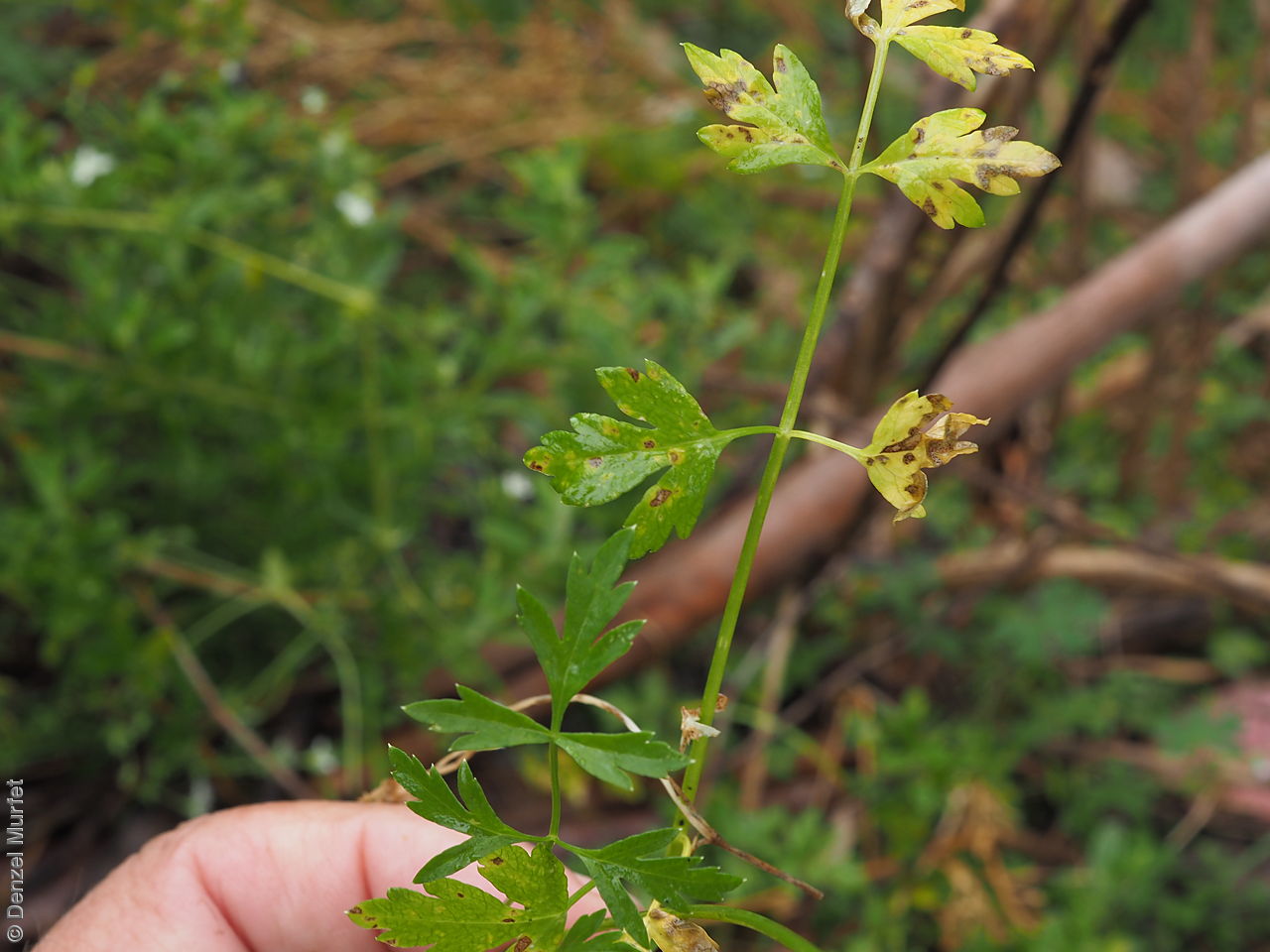
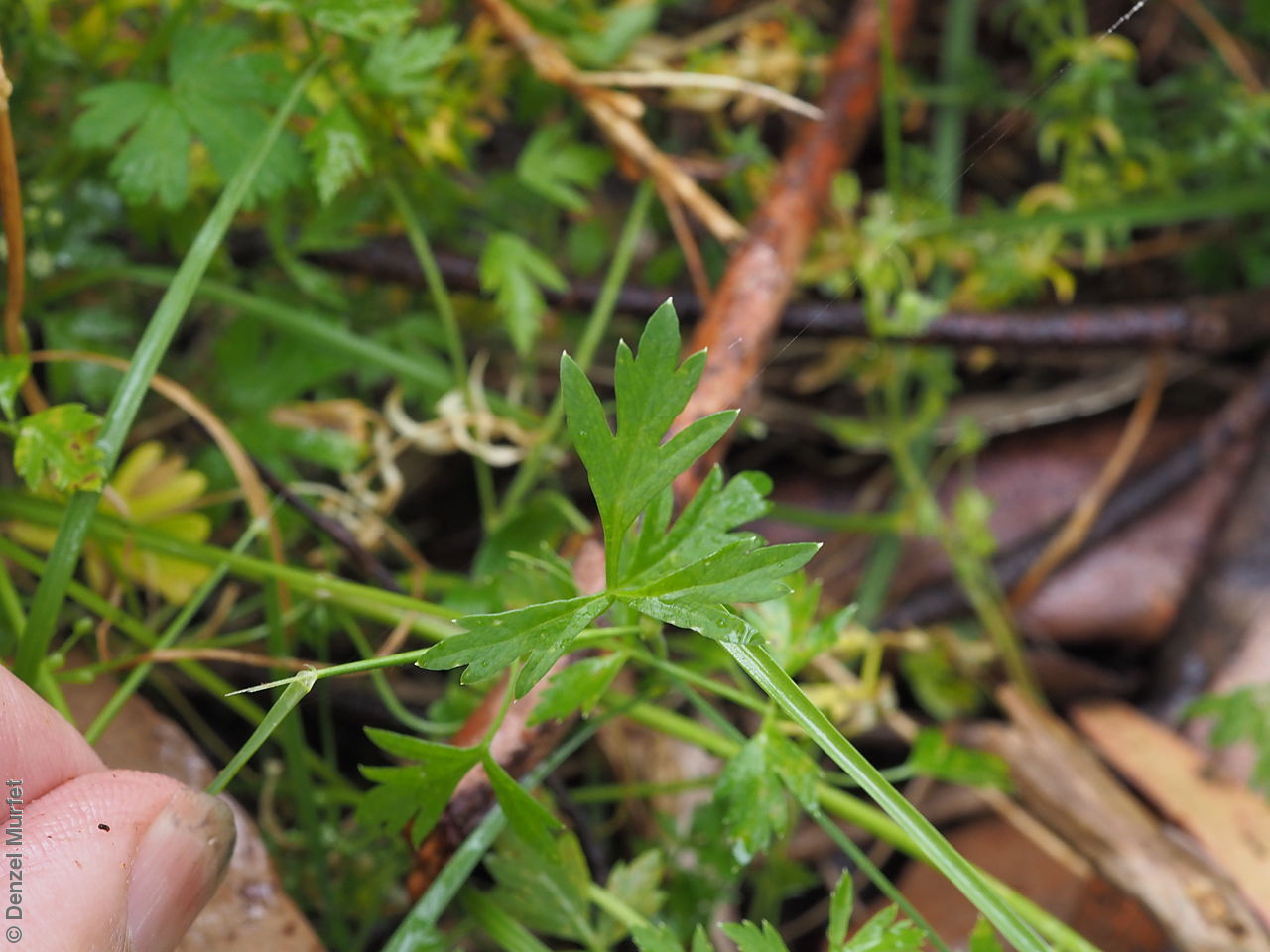
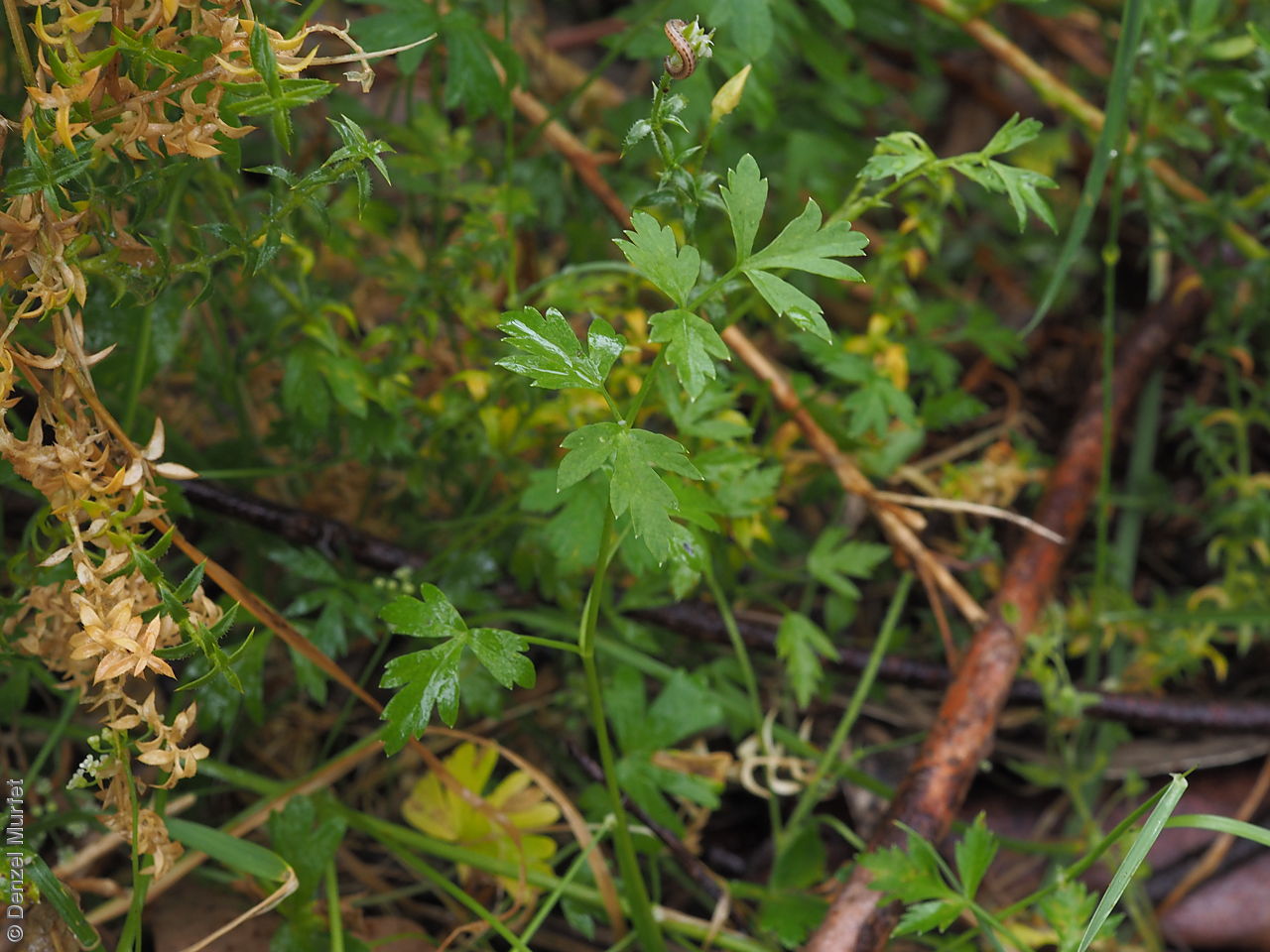
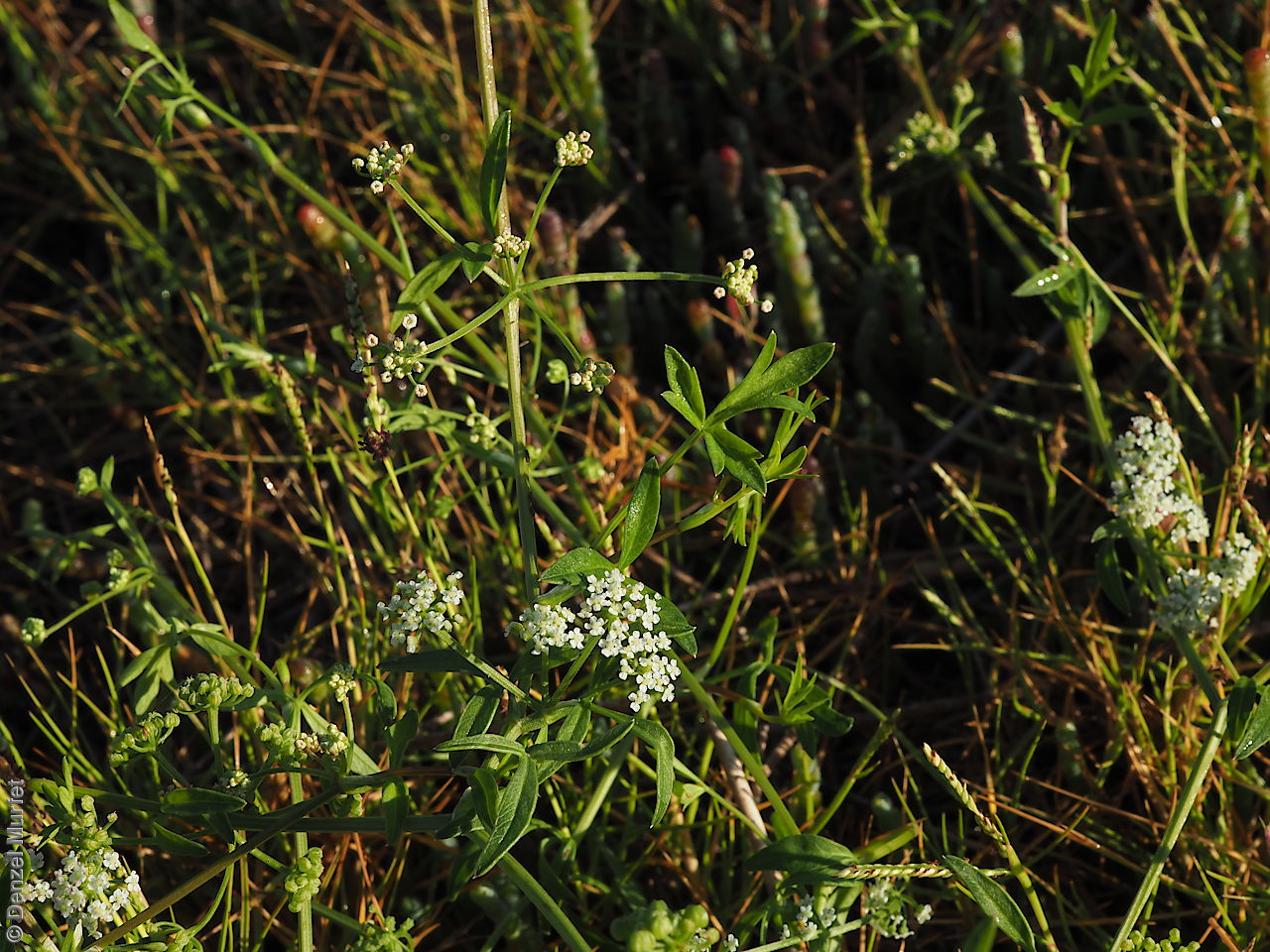
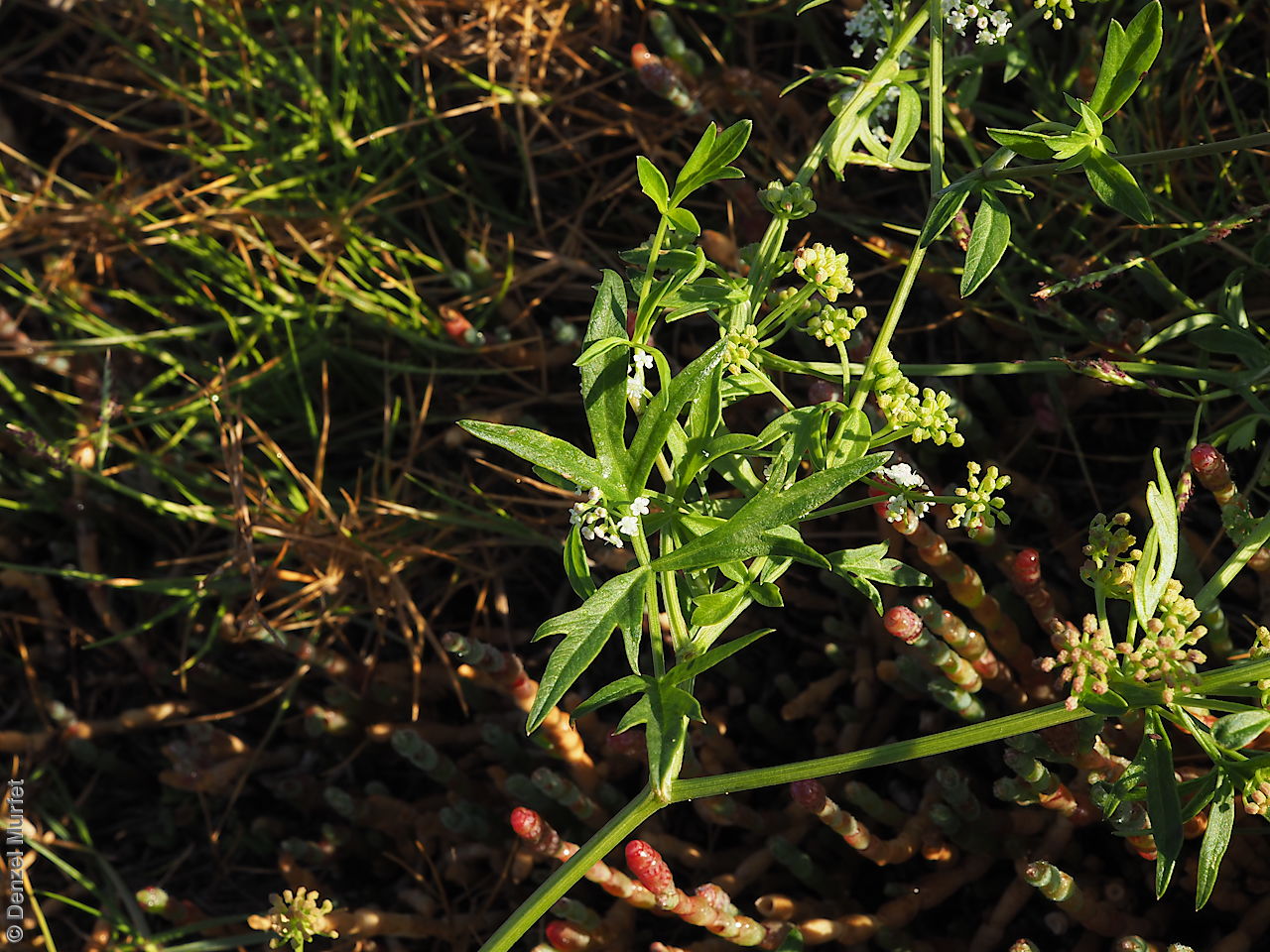
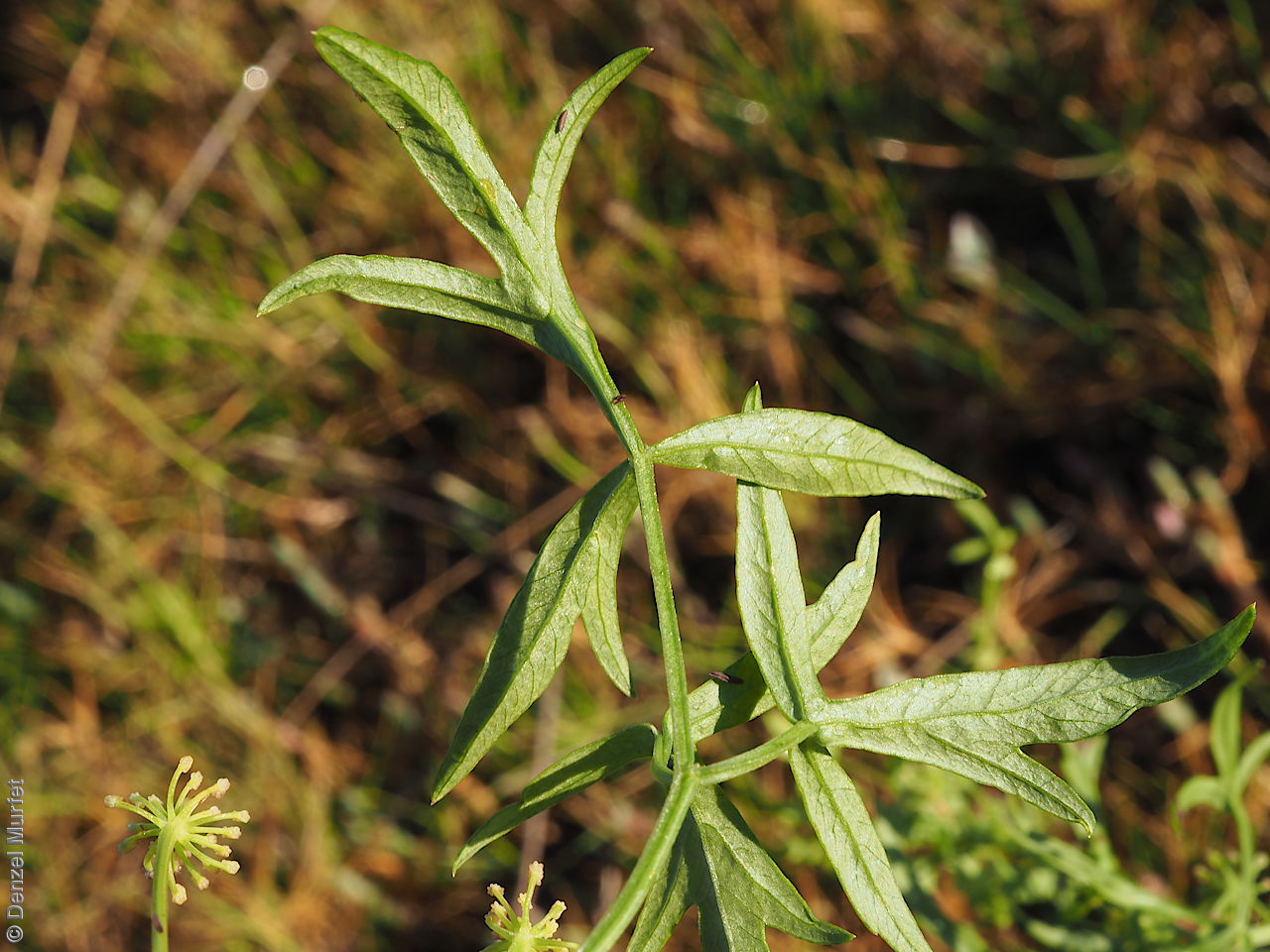
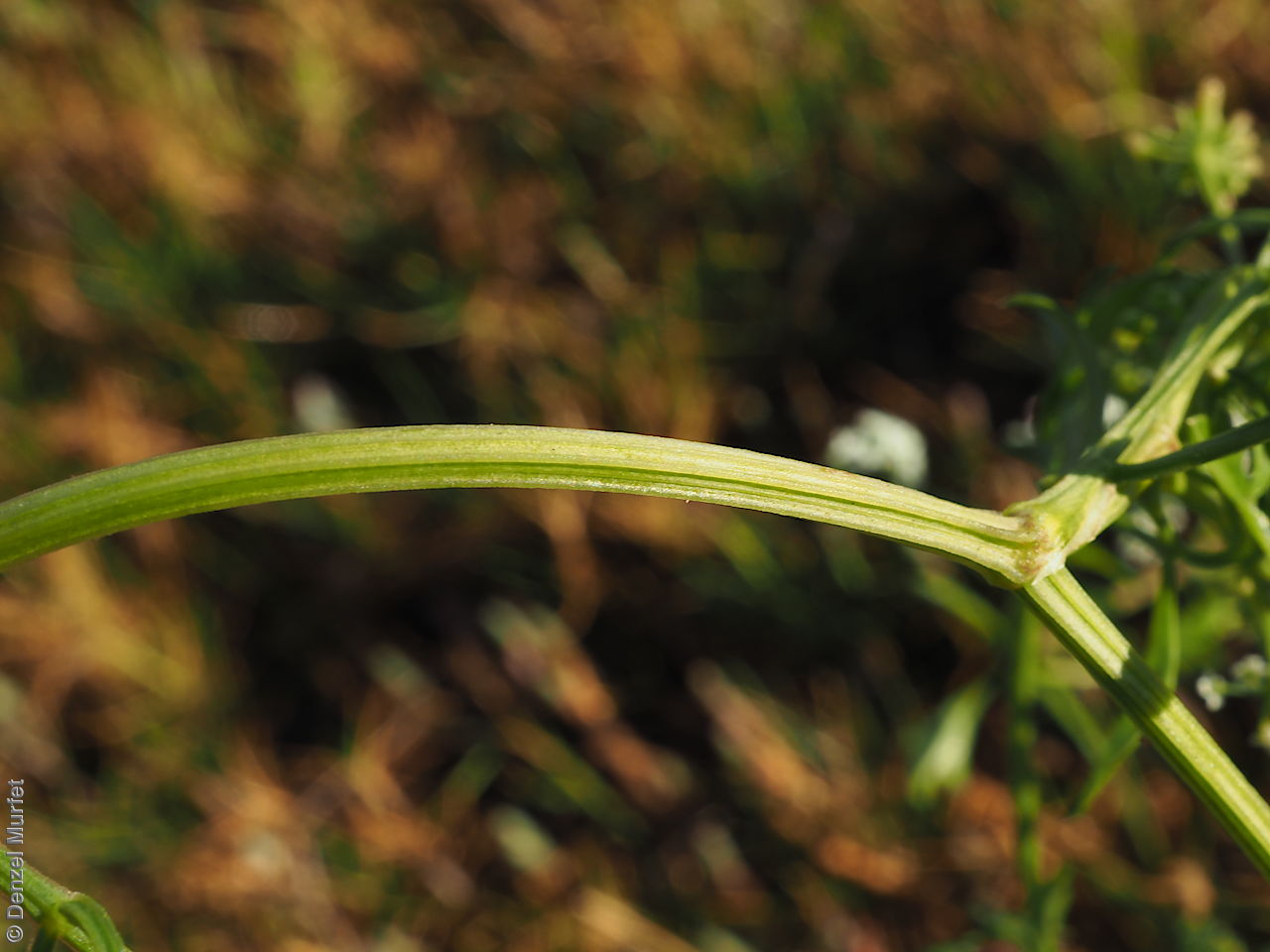
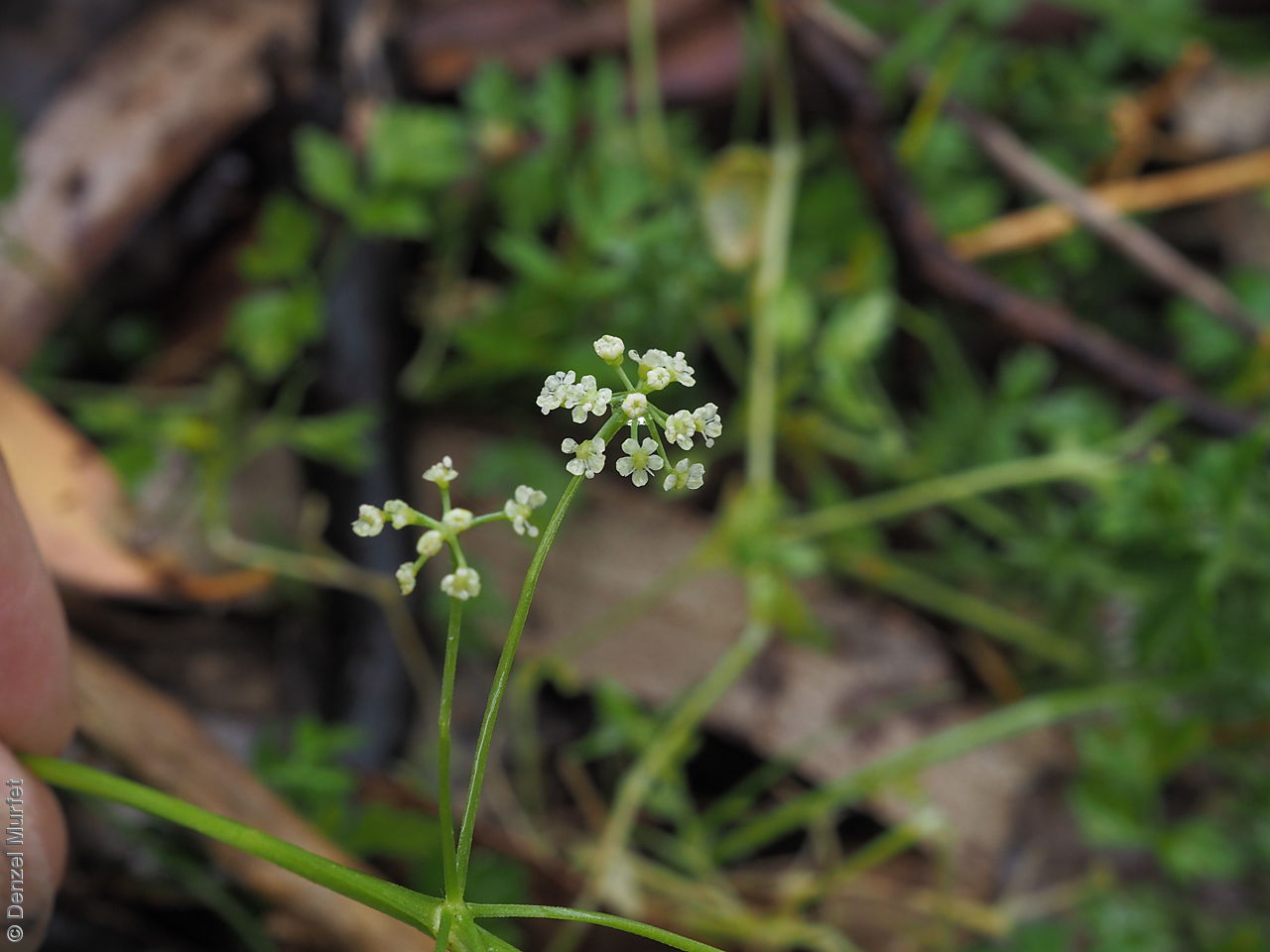
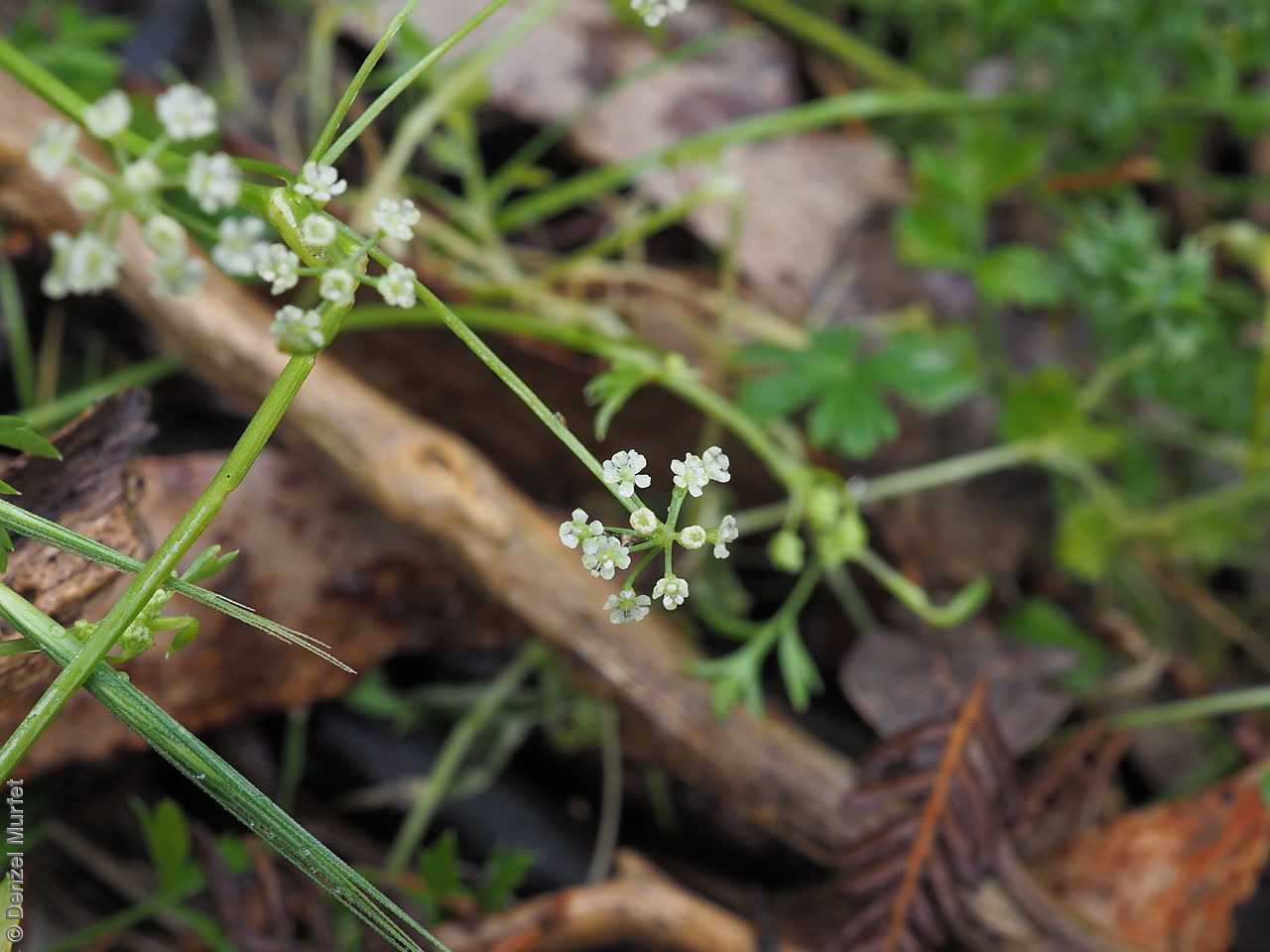
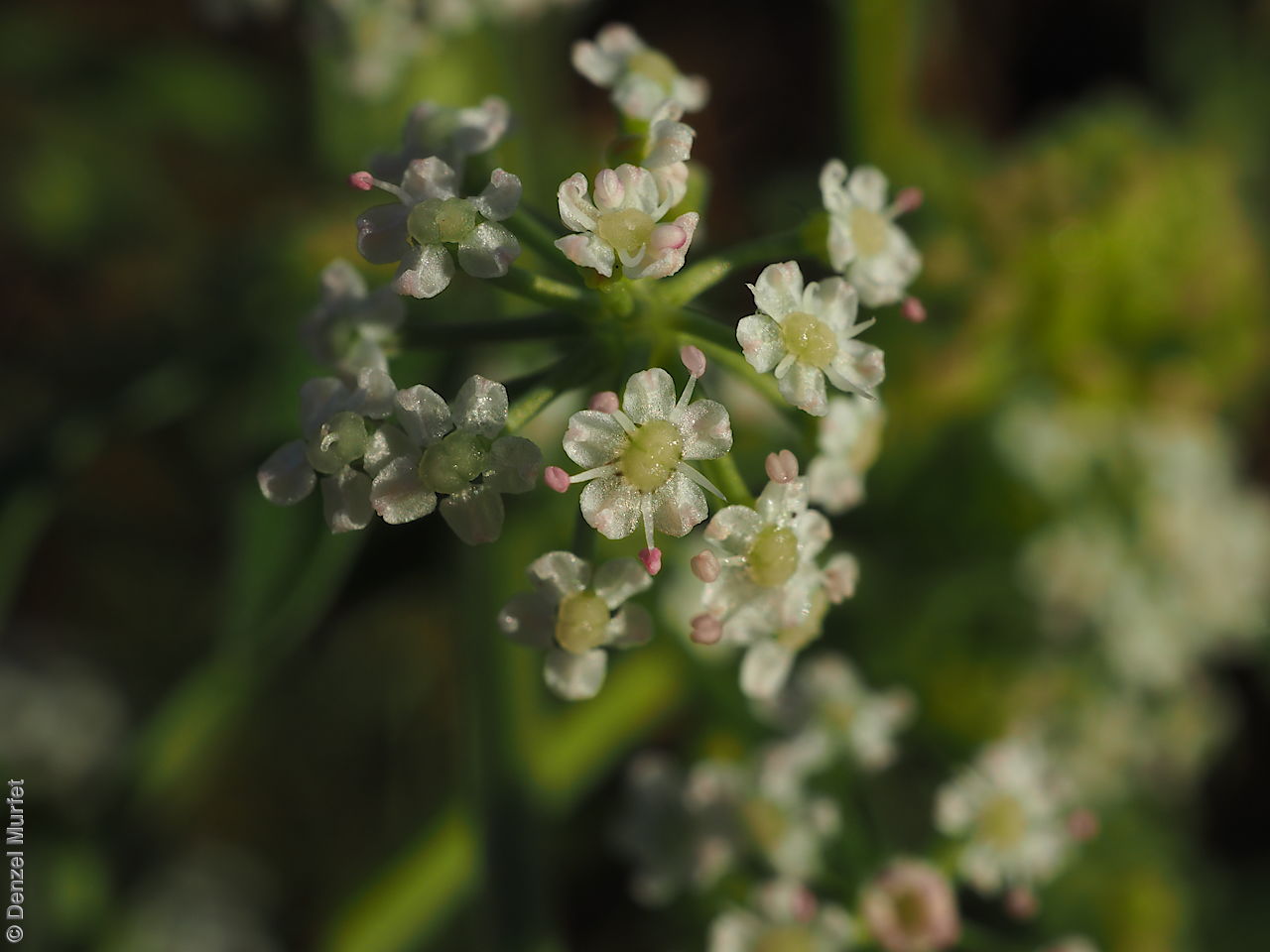
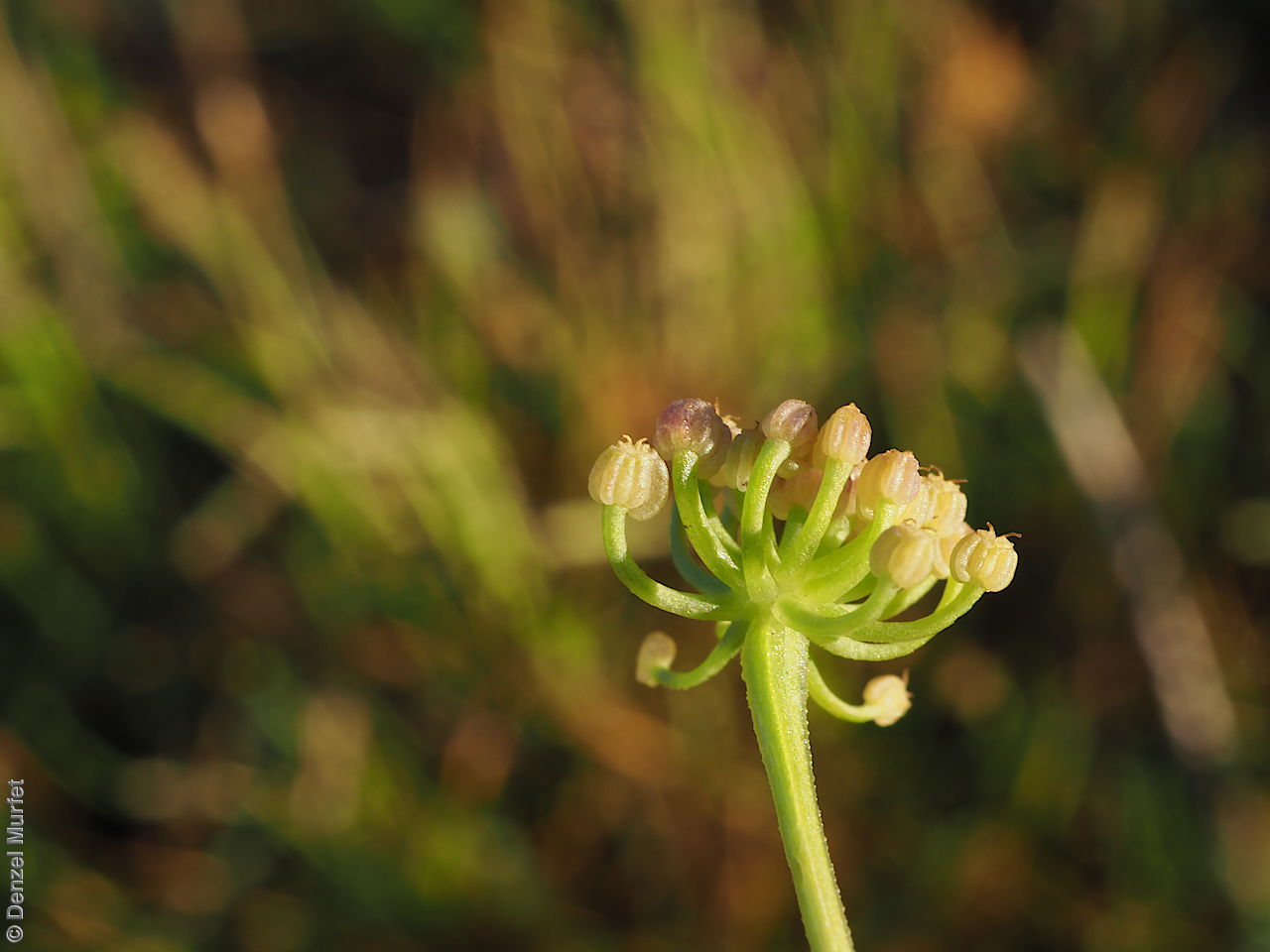
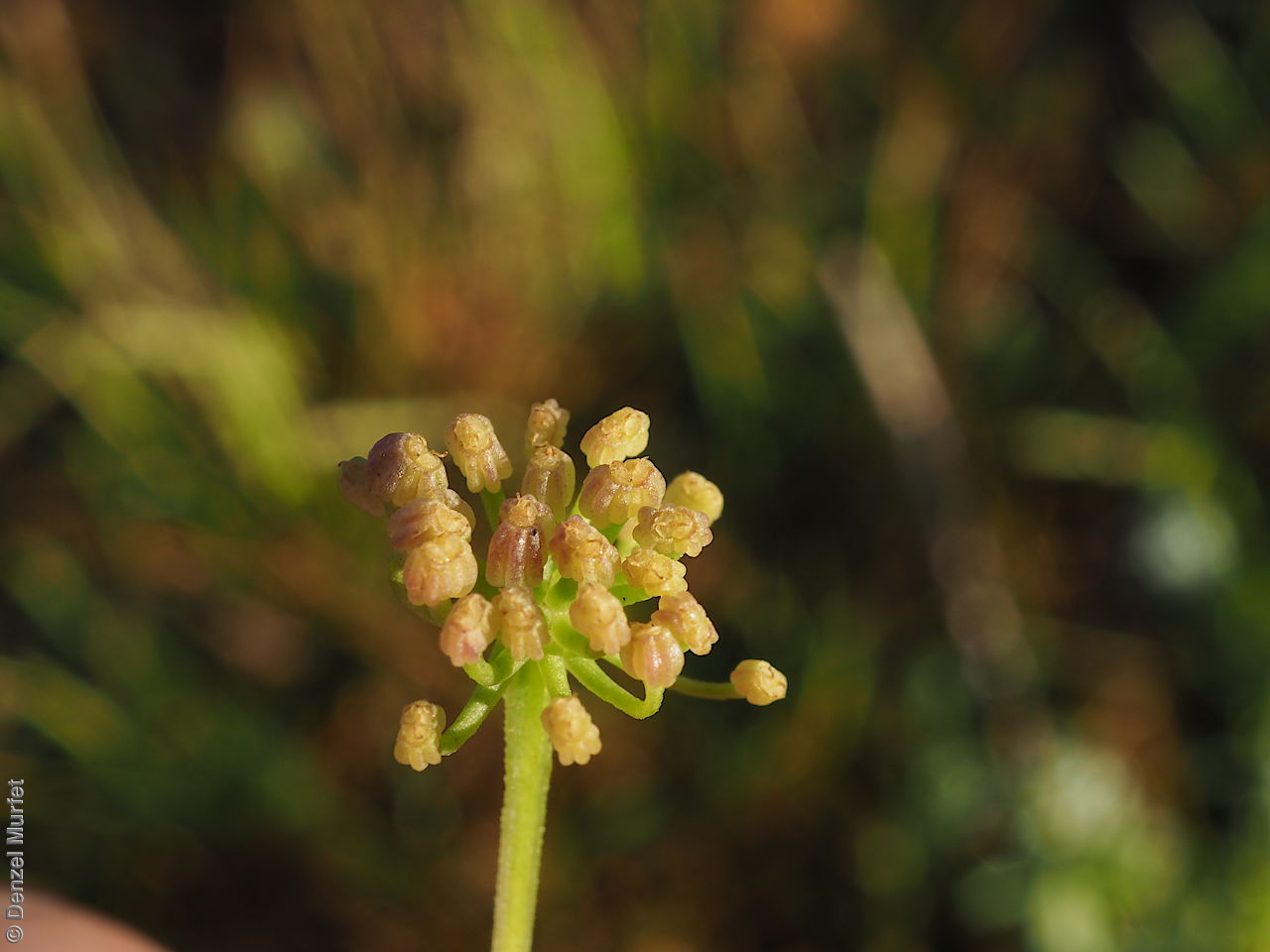
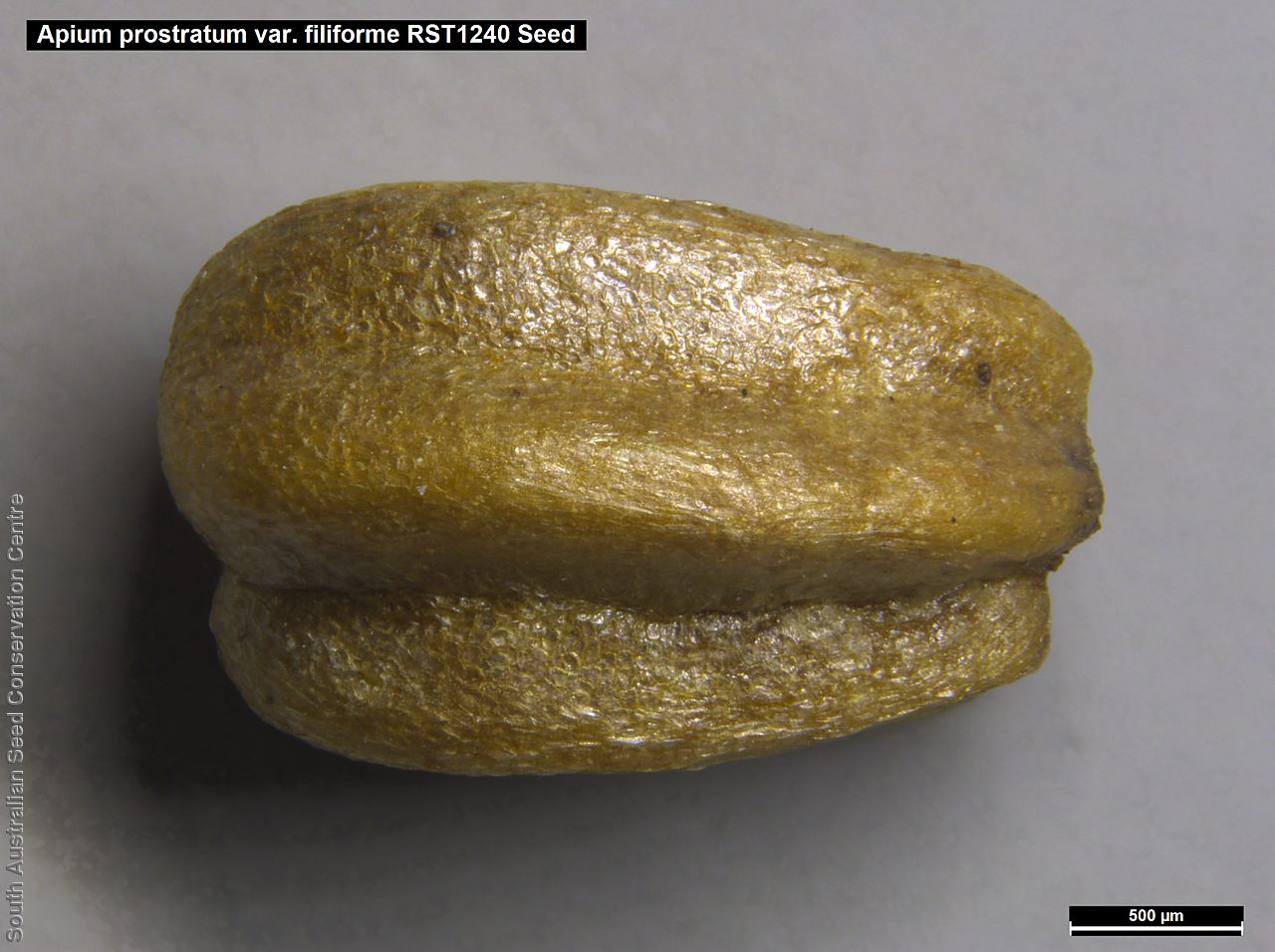
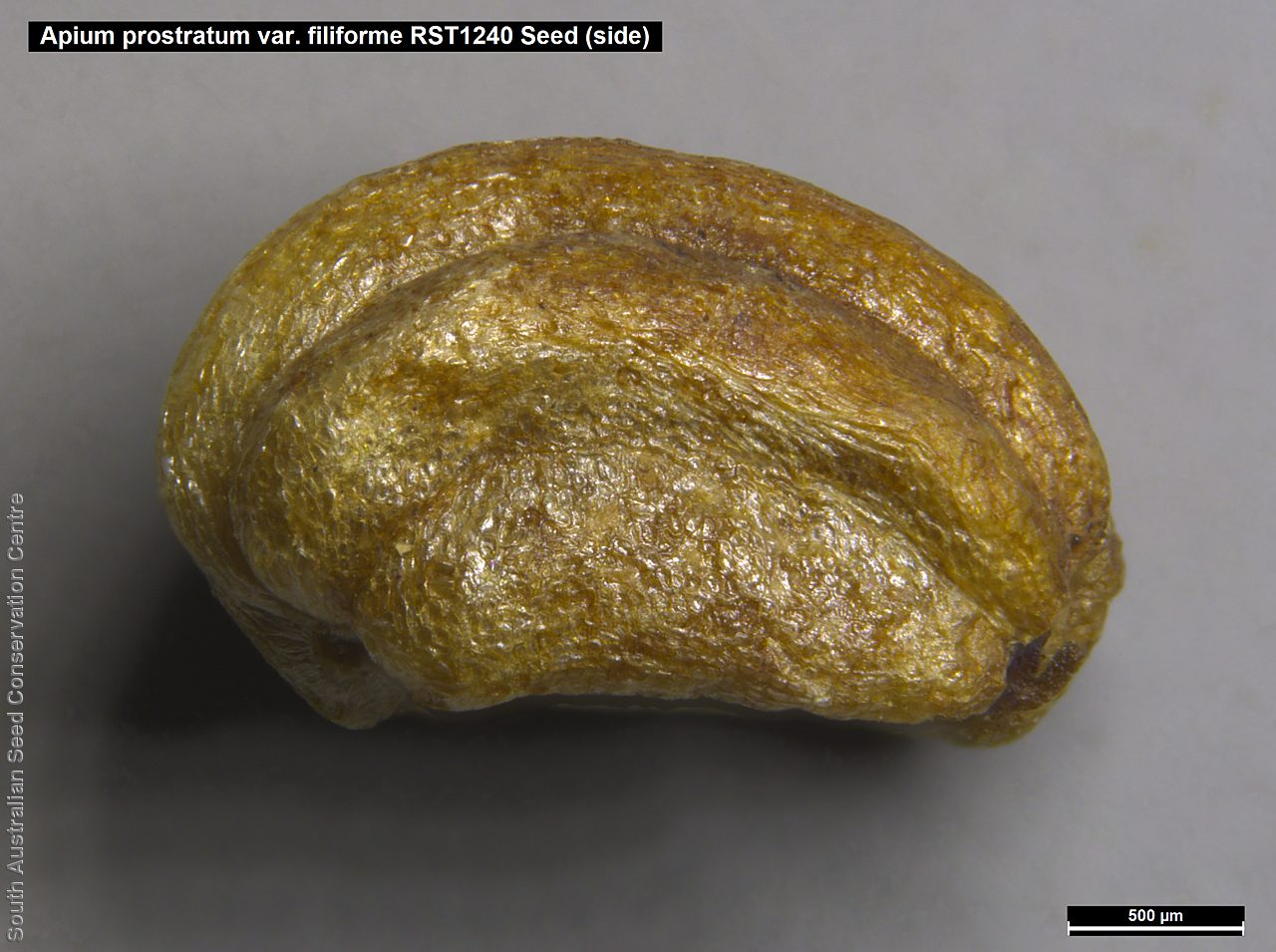
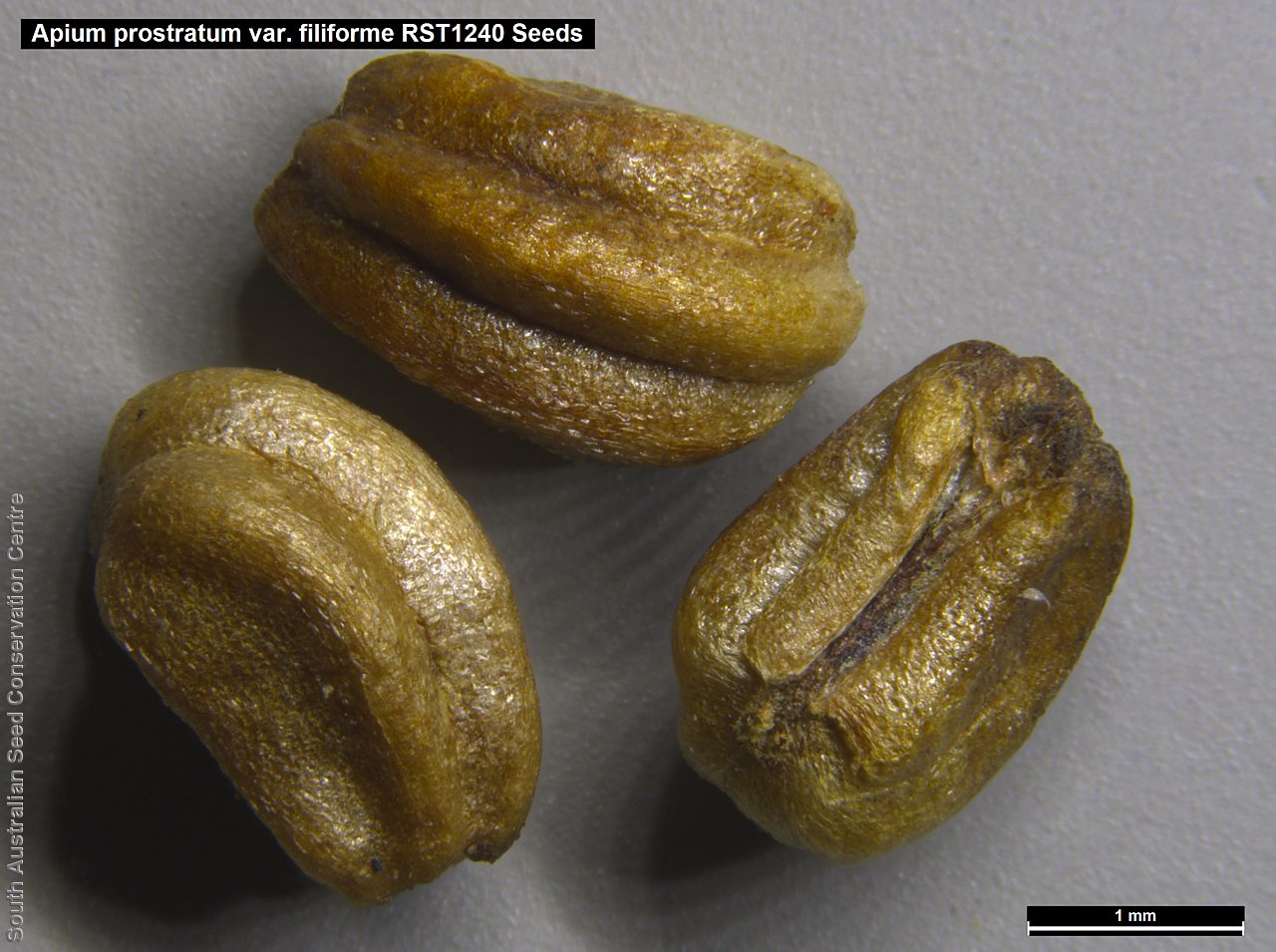

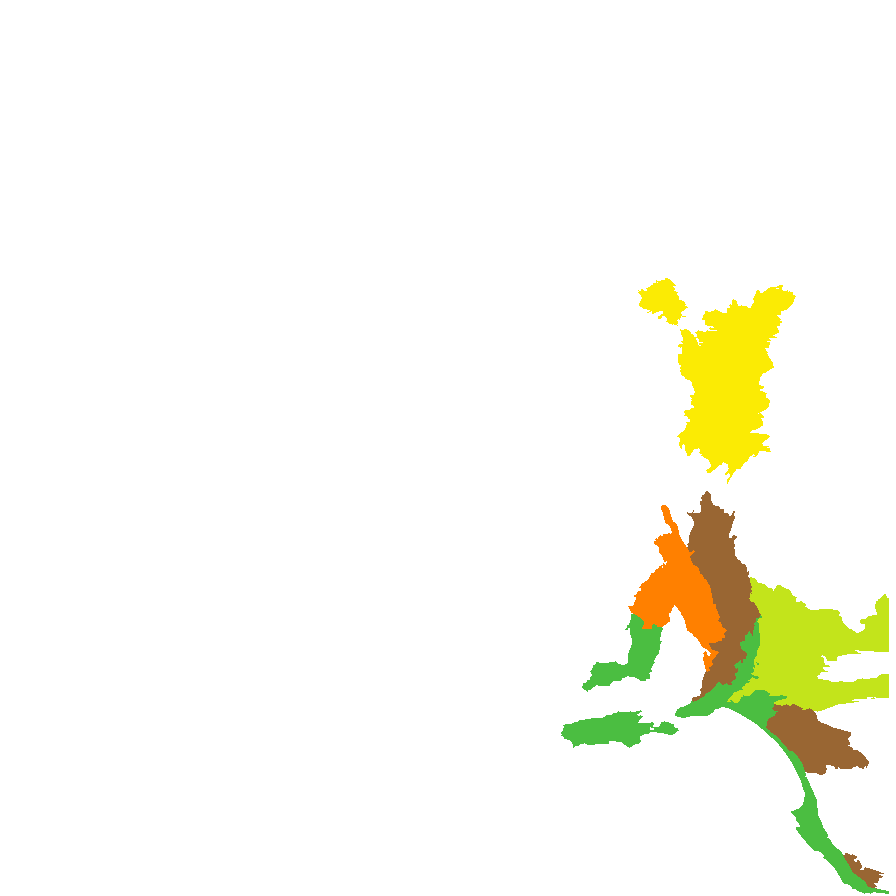
Botanical art
Prior names
Petroselinum filiforme
Apium filiforme
Common names
Broad-leaf Sea Celery
Native Celery
Sea Celery
Etymology
Apium is an ancient Latin name for celery or parsley. Prostratum from Latin meaning flat on the ground or prostrate, referring to its habit. Filiforme from the Latin 'filum' meaning thread and 'forma' meaning shape, referring to the narrow stems rather than the leaflets which, unlike those of the type variety, are far from filiform.
Distribution and status
Found mainly along the coast in South Australia from the Eyre Peninsula to the lower South-east and north to the Flinders Ranges, growing in coastal situations on sand dunes, cliff faces or near estuaries and saline lakes but also occasionally beside fresh-water streams. Also found in all States except in the Northern Territory. Native. Common in South Australia. Common in the other states.
Herbarium regions: Flinders Ranges, Eastern, Eyre Peninsula, Northern Lofty, Murray, Yorke Peninsula, Southern Lofty, Kangaroo Island, South Eastern, Green Adelaide
NRM regions: Adelaide and Mount Lofty Ranges, Eyre Peninsula, Kangaroo Island, Northern and Yorke, South Australian Arid Lands, South Australian Murray-Darling Basin, South East
AVH map: SA distribution map (external link)
Plant description
Prostrate biennial or perennial herb to 70 cm long, with slender branches under 5 mm diameter. Leaves 1-3-pinnate, lower leaves to 20 cm long, those opposite inflorescence to 15 cm long. Inflorescence in umbels with 4-15 white flowers with tiny yellow-brown midrib. Flowering between January and April. This variety differs from the other found in South Australia in having leaflets that are divided, primary segments elliptic, ovate or cuneate; 2-3 times as long as wide; to 20 mm long, compared to Apium prostratum var. prostratum which have leaflets entire or divided, with undivided leaflets and primary segments linear to narrow-lanceolate, to 6 cm long, 6-15 times as long as wide. Fruits are brown globular cluster with a number of seed segments. Seeds are pale brown, reniform to 3 mm long and 2 mm wide, ribbed. Seed embryo type is linear under-developed.
Seed collection and propagation
Collect seeds between March and June. Collect maturing fruits by picking off the clusters that are turning brown. Place the fruits in a tray and leave to dry for one to two weeks. Then rub the fruits with a rubber bung to dislodge the seeds. Use a sieve to separate the unwanted material. Store the seeds with a desiccant such as dried silica beads or dry rice, in an air tight container in a cool and dry place. Seed viability is usually high.